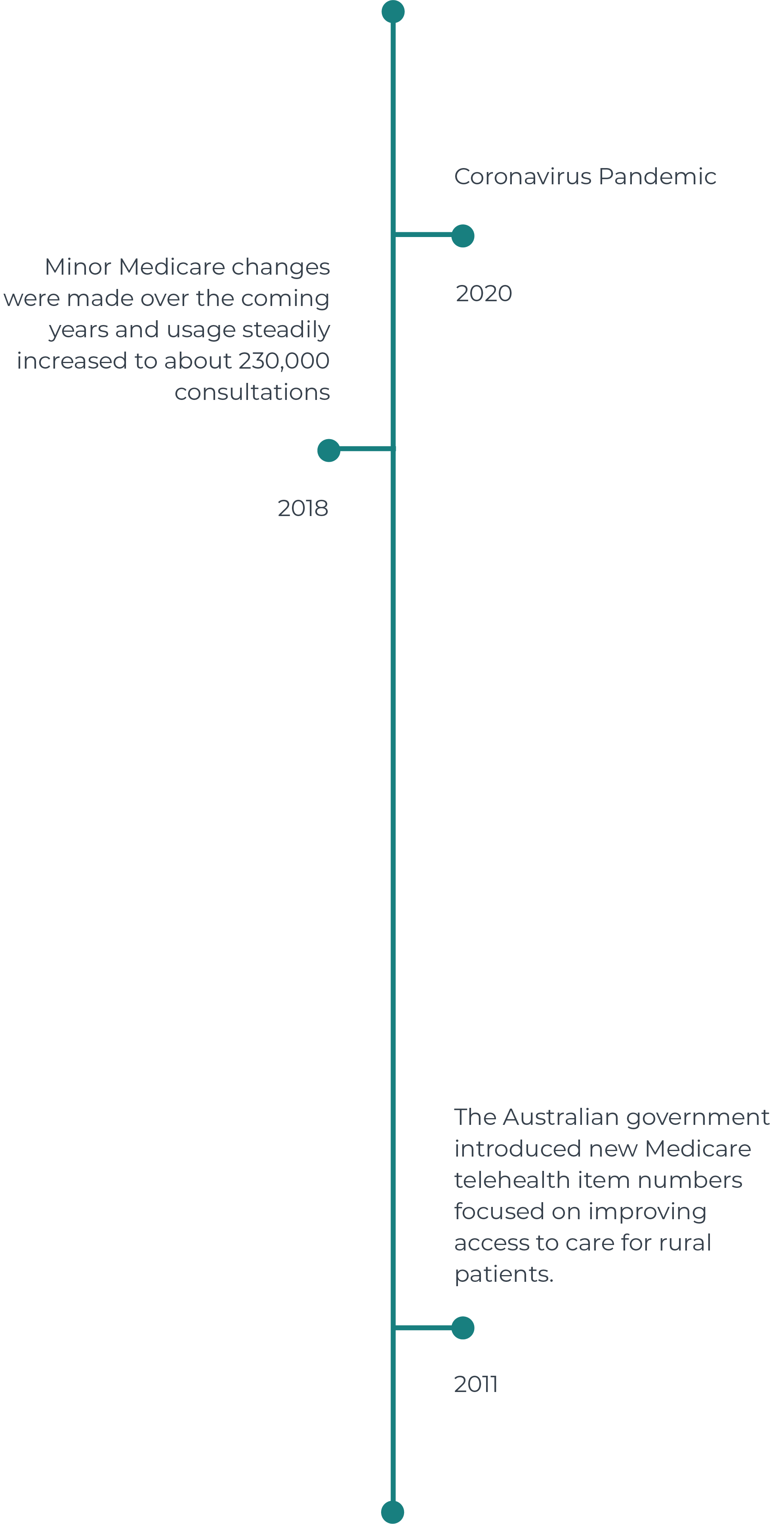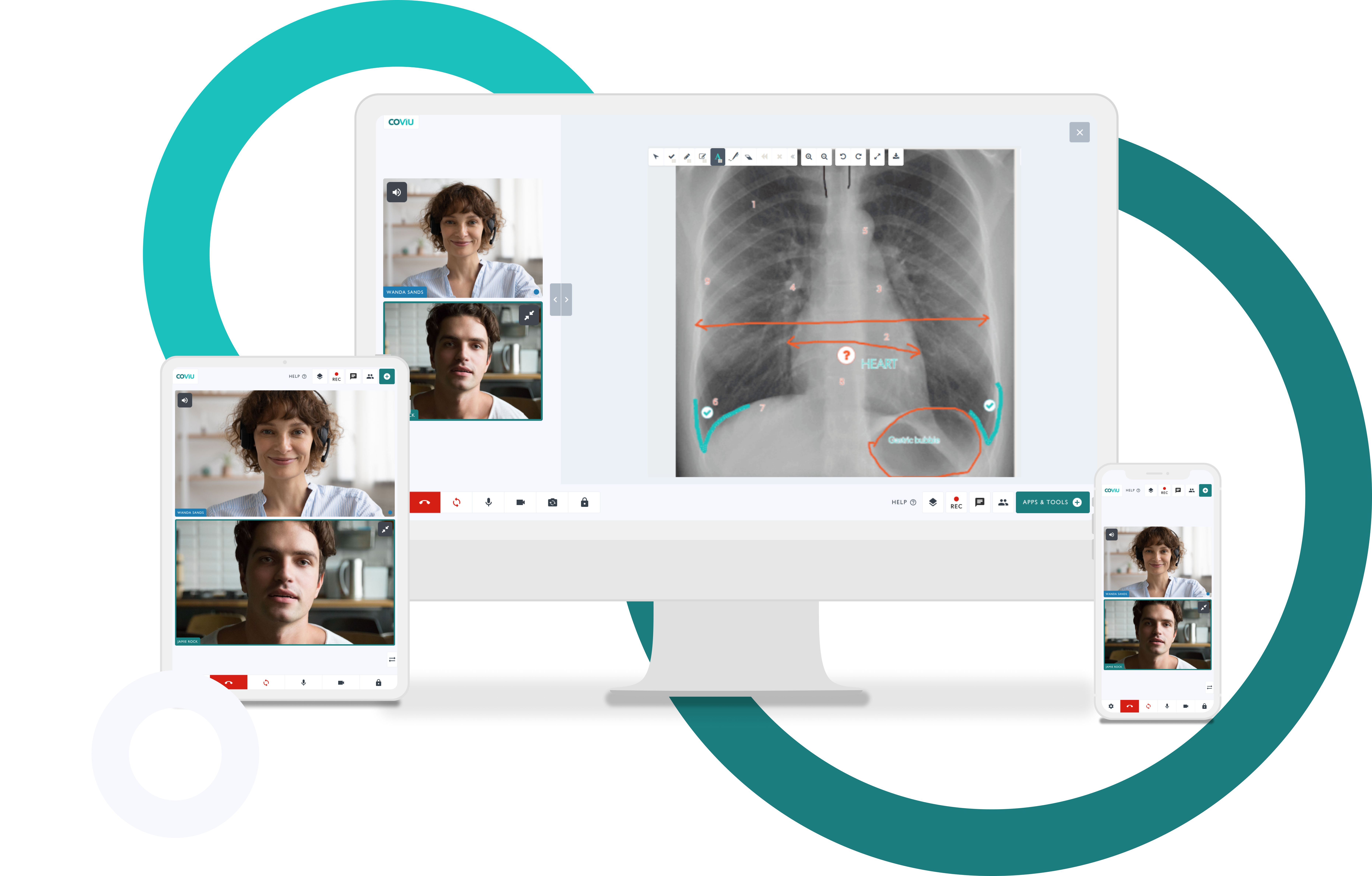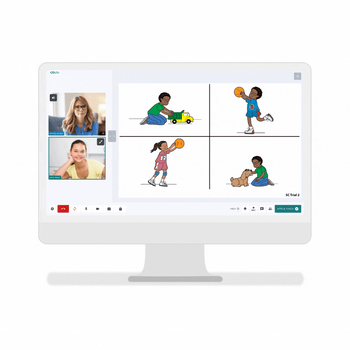Telehealth: Your Comprehensive Guide
Australians had more than 40 million telehealth consultations in 2020.
Quick Links:
When was telehealth introduced?
How did COVID-19 change telehealth in Australia?
What’s involved in a telehealth service?
What are the advantages of telehealth?
How does telehealth improve patient care?
Who is eligible for telehealth?
What kind of appointments can be held over telehealth?
Why are telehealth platforms required?

When was telehealth introduced?
The first recorded case of telehealth in Australia dates back to 1874 when a doctor in Adelaide provided advice over the newly constructed telegraph line to ease the suffering of an injured and dying man in Central Australia. The telegraph was also used to connect the man to his wife over 2000 km away.
After that, not much happened for a while…
The telegraph gave way to the telephone and the internet was invented. Amazon, Google and Facebook were launched and the first iPhones hit the shelves. Video conferencing moved out of the boardroom and onto the laptop, enabling people to ‘see’ friends and family on the other side of the world.
But most healthcare still happened in a face-to-face consultation, usually in the doctor’s clinic and occasionally in the patient’s home.
That began to change in 2011 when the Australian government introduced new Medicare telehealth item numbers focused on improving access to care for rural patients. A specialist providing telehealth to a rural patient could claim an additional payment of up to 50% of the standard fee for seeing that patient face-to-face. A GP or nurse supporting the patient in the consultation could also claim reimbursement through Medicare.
Minor Medicare changes were made over the coming years and usage steadily increased to about 230,000 consultations during 2018-2019. That still represented less than 1% of all consultations though.
State governments also began to use telehealth within their public hospital systems, with Queensland and South Australia, for example, running internal video consultation systems. Meanwhile, digital technologies continued to evolve. Increasingly popular wearable devices could monitor heart rate and step count. More specialised remote monitoring devices could measure blood glucose, blood pressure, heart arrhythmias or blood oxygen levels then transmit this data to a patient’s doctor through the cloud.
Then came COVID-19.
Telehealth Success Stories
Read the success stories of Coviu's customers to learn how you can transform your practice with telehealth
Telehealth has opened up doors we didn’t even realise existed!
Psychologist, CEO and Founder of One Central health
Coviu success story: making my healthcare services accessible to all
Advanced Accredited Practising Dietitian and Director of Great Ideas in Nutrition
Getting your speech pathology clinic - online!
Kanella Mendigorin, Speech Pathologist at Shine Early Intervention
'As good as a face-to-face session' - telehealth success
Ailie O'Flaherty, Psychologist at Esteem Psychology
Enhancing Diabetes Care for People with Intellectual Disability
Registered Nurse, Credentialled Diabetes Educator and Director of EdHealth Australia
How did COVID-19 change telehealth in Australia?
COVID-19 rapidly advanced telehealth in Australia. Instead of being largely reserved for rural patients, telehealth became the means of enabling ongoing access to healthcare during a pandemic.
Medicare item numbers (telehealth reimbursement) were rapidly expanded and a ‘forced adoption’ of telehealth began with GPs, in particular, adjusting to providing telehealth in the midst of a public health emergency. Patients, though, were already on familiar territory. They were already used to managing most aspects of life online – banking, shopping and booking holidays through various apps.
With widespread lockdowns, most people were working and socialising online, dipping into virtual meetings and connecting with friends and family through smartphones or tablets.
Digital healthcare was a perfect fit, both for short-term illnesses and long-term care for chronic conditions.
Medicare item numbers and bulk billing requirements fluctuated throughout 2020 and early 2021 but now the government has announced that telehealth will now be a permanent feature of the Australian healthcare system.
Technical Set-Up Tips
Tips and tricks to help practitioners set up for telehealth success.

What’s involved in a telehealth service?
Beyond the clinical aspects, there’s a surprising amount of planning involved in running an effective telehealth service.
Practices need to consider:
- Patient privacy and security of information – best done by investing in a secure telehealth platform
- Medico-legal aspects of telehealth including informed consent and assignation of Medicare benefits
- Insurance
- Integration with other practice systems such as bookings and billing
Some practices quickly chose telehealth software. Most dodged the issue and instead relied heavily on phone calls (accounting for 97% of telehealth appointments by some estimates). But with the AMA and the government signalling a strong preference for video telehealth, practices are now beginning to explore telehealth video platforms such as Coviu.
How is telehealth used?
Telehealth is used to overcome barriers to healthcare such as distance, frequency or risk of infection.
It can be used to:
- Connect a patient living in rural Australia with a city-based specialist
- Make healthcare more convenient for patients who need frequent appointments to manage a chronic condition
- Protect doctors and patients from the risk of passing on an infectious disease by providing care without meeting in person
- Maintain continuity of care for a patient who has gone travelling or moved to a new area
Discover how telehealth created flexibility for this practice and their patients.

What are the advantages of telehealth?
For patients, telehealth’s advantages include:- Convenient care without leaving home or the office – helpful for busy people, those who live far from their care team or those for whom travel is difficult due to age or disability
- Greater choice of healthcare providers since geographical proximity no longer matters
- Removing the risk of catching something from someone else in the waiting room
- Treating infectious patients without risking their own health
- Being able to work from home
- Generating revenue from new patients beyond their local patch
- Increasing throughput of patients
- Providing team-based care
- Extending their skills
Coviu's Research Shows what Australians Believe about Video Telehealth:
.png?width=250&height=250&name=90.2%25%20(10).png)
-1.png?width=250&height=250&name=90.2%25%20(9)-1.png)
.png?width=250&height=250&name=90.2%25%20(11).png)
Believe video telehealth saves time
Believe video telehealth makes healthcare more accessible
Believe video telehealth is comparable to in-person care
How does telehealth improve patient care?
Telehealth improves patient care by making it easier for patients to attend appointments and benefit from their doctor’s advice.
It means that people in rural or regional areas are able to access high-quality care that would have otherwise been beyond their reach without time-consuming, expensive travel.
It means Australians living with chronic conditions can attend regular appointments without exhausting their boss’s patience, reducing no-shows and maintaining continuity of care. It also means patients can choose the best provider for their needs, not simply the nearest.
Who is eligible for telehealth?
To be eligible for Medicare-subsidised telehealth services, a patient must have had a face-to-face consultation with a healthcare professional at that practice in the last 12 months.
That’s intended to ensure continuity of care but the rule can be waived for patients:
- Receiving telehealth from a GP at an Aboriginal Medical Service or Aboriginal Community Controlled Health Service
- Under a year old
- Experiencing homelessness
- Under lockdown restrictions or in quarantine
- Living in a place declared a natural disaster area due to flood.
Watch Coviu's Telehealth Webinars On Demand
Webinar: Telehealth Cyber Security
Telehealth has become an increasingly important tool for all health professionals since COVID-19. But how can you be sure you are looking after your patients' and your own information privacy? How do you know the telehealth platform you are using is secure? What are some of the cyber security risks we should be looking out for?
Proudly hosted by Coviu, our expert panel shares their privacy and cyber security insights from their experiences in the industry.
2021 State of Telehealth Summit
Coviu and Mental Health Academy partnered to deliver the largest ever telehealth-focused online conference, the 2021 State of Telehealth Summit.
This ground-breaking event brought together 20 subject-matter experts and 10 hours of learning – all accessible entirely free and from the comfort of your home:
- Presenters from The University of Sydney, UNSW, UQ, Griffith University, QUT, Swinburne University of Technology, Royal Melbourne Hospital, and other leading organisations
- Topics include telehealth best practices, assessment and eMH tools, business implementation, practitioner self-care, and more!
Valid & Reliable Psychological Assessments with Telehealth
Coviu and Pearson Clinical Australia partnered to deliver a free, live webinar on the latest developments in telehealth psychological assessments.
- The latest research into telehealth psychology.
- The best practices for delivering telehealth assessments aimed at increasing test validity and maintaining examinee attention.
- The benefits and limitations of common methods of delivering telehealth assessments, including Q-interactive, Coviu, & other tools.
- Preview of Coviu's WISC-V and WAIS-IV tools.
Telepsychology Update: Evidence, Efficacy, Extended Funding
Telepsychology is rapidly evolving. New telehealth research, guidelines, technologies, and funding guidelines are published each month, often receiving limited attention. Co-hosted by Australia’s leading telehealth provider and AAPi, this webinar will provide an in-depth update on telehealth psychology.
-
Emerging research into the efficacy of telehealth psychology.
-
The latest evidence-based guidelines for telehealth psychology.
-
New telehealth technologies for behavioural and cognitive assessments.
-
Funding updates for Medicare, DVA, and private health insurance.
What kind of appointments can be held over telehealth?
Many aspects of medical and allied health care can be provided through telehealth. GPs, medical specialists, allied health providers, mental health professionals and nurse practitioners can all provide telehealth services.
It is up to healthcare professionals to determine which patients or health issues can suitably be assessed in a telehealth consultation giving consideration to:
- Clinical needs – is there a need for an in-person physical assessment or can an accurate diagnosis and treatment plan be determined by video or phone?
- The patient’s capacity – do they have the right equipment, are they happy to use technology, do they have any hearing issues or visual impairments that may make telehealth difficult?

The Royal Australian College of Physicians notes that:
"Telehealth is no different from any other medical consultation and should be conducted in a similar manner to a face-to-face consultation. A telehealth consultation of high quality is one in which recommendations for assessment, clarification of diagnosis, and recommendations for treatment and review are clearly communicated as per current best practice models of care. "
Reimbursement Fact Sheet
Download our printable fact sheets with the item numbers and details for specific reimbursements available.
What does telehealth cost?
Despite its high-tech nature, telehealth is not terribly expensive. Indeed, the Australian National Consultative Committee on Health considers visit-based care to be the most expensive form of healthcare delivery.
In Australia, patients can be reimbursed for telehealth appointments through a number of government schemes including the:
- Medicare Benefits Schedule (MBS)
- Commonwealth Home Support Programme (CHSP)
- Home Care Packages Program (HCP)
- Department of Veteran Affairs (DVA)
- National Disability Insurance Scheme (NDIS).
Patients can also use private health insurance for telehealth appointments.
Practices find it easier to provide a high-quality telehealth service if they invest in telehealth solutions that integrate with their practice workflows.
Coviu does exactly that. Our elevated telehealth platform integrates with practice management systems and online booking platforms. Coviu also includes consent forms, escripts, sharing tools and in-call payments. Plans start from just $20 per month.
Start your free 2-week trial today (no credit card required).

Why are telehealth platforms required?
A telehealth consultation is fundamentally different from Facetiming a friend or joining a virtual meeting at work.
There are significant medico-legal issues, sensitive patient data that must be stored securely, consent that must be recorded, and a number of administrative and financial matters to manage.
So, while there are many telehealth platforms out there, wise practices will invest in a robust, purpose-built telehealth solution like Coviu.

What does Coviu offer for telehealth?
Coviu is an all-in-one virtual care engagement platform that enables providers to deliver a superior, frictionless virtual care experience to improve clinical outcomes, capacity and workflow efficiencies.
We’re the Australian government’s telehealth platform of choice suitable for GPs, medical specialists, allied health professionals and large-scale practices.
Coviu is:
- Easy to set up in a matter of minutes
- Packed with features to enhance consultations, including optional tools tailored to your particular professional needs
- Designed to integrate seamlessly with your existing practice systems and workflows
- HIPAA compliant with end-to-end encryption (E2EE) to ensure your data is always safe & secure
- Easy for patients – they just click a link and connect
- Flexible – use it on your computer, tablet, or phone on all major browsers (Chrome, Safari, Firefox and Microsoft Edge)
To date, Coviu has powered over 9 million telehealth consultations globally, each one helping to improve access to healthcare, generate practice revenue and protect doctors’ wellbeing.
Marketing Your Telehealth Practice
Learn how to market your telehealth practice. These steps are easy to implement and assist with transitioning your existing clients, as well as acquiring new clients to your practice.
Marketing Your Telehealth Practice
You are up and running telehealth consultations, but how do you attract clients to your new service? Marketing your telehealth practice can be a challenging aspect many clinicians face when providing a telehealth service to their clients. Don’t worry - you are not alone!
We have put together the ins and outs on how to market your telehealth practice, which are easy to implement and assist with transitioning your existing clients, as well as acquiring new clients to your practice. We provide a rundown of some paid and unpaid tools to help you get started, including both online and offline channels.
Video Telehealth at Youthrive - Expanding Footprint and Improving Access to Services
The case study takes a closer look at Youthrive, a social enterprise that provides speech pathology, occupational therapy and psychology support to children and their families. Learn how Youthrive was quickly able to switch their business model, during the lockdowns of the COVID-19 pandemic, to take full advantage of video telehealth and why it remains an integral part of Youthirve's services going forward.
Telepsychology at NSW Department of Education - Rapid Roll-Out During the Pandemic
This case study outlines how the DoE was able to implement a Telepsychology platform that allowed school counselling staff to continue providing support and therapy to students during the uncertain times of the pandemic. To learn about their experience first hand, Coviu interviewed Pauline Kotselas, Leader of Psychology and Wellbeing Services, Child Protection, Health, Mental Wellbeing and Karina Worrall, the Principal Psychologist at DoE.
More Telehealth Resources
.jpeg)


Industry Trends in Digital Health Care - Dr Silvia Pfeiffer Discusses Live on LinkedIn
Coviu CEO and Co-Founder, Dr Silvia Pfeiffer went live on LinkedIn to discuss Industry Trends in Digital Healthcare.
A Guide To Australian Telehealth Statistics
Patients are in the midst of a telehealth love affair, which offers many growth opportunities for doctors in private practice.
Telehealth - More Than Just A Pandemic Necessity
More so than ever in the past year, where we saw a massive industry shift from in-person care to virtual care delivered via telehealth due to the worldwide pandemic.
Sign up for Telehealth Tips and Tricks
Are you a provider or a patient?
Have Questions? Contact Us








